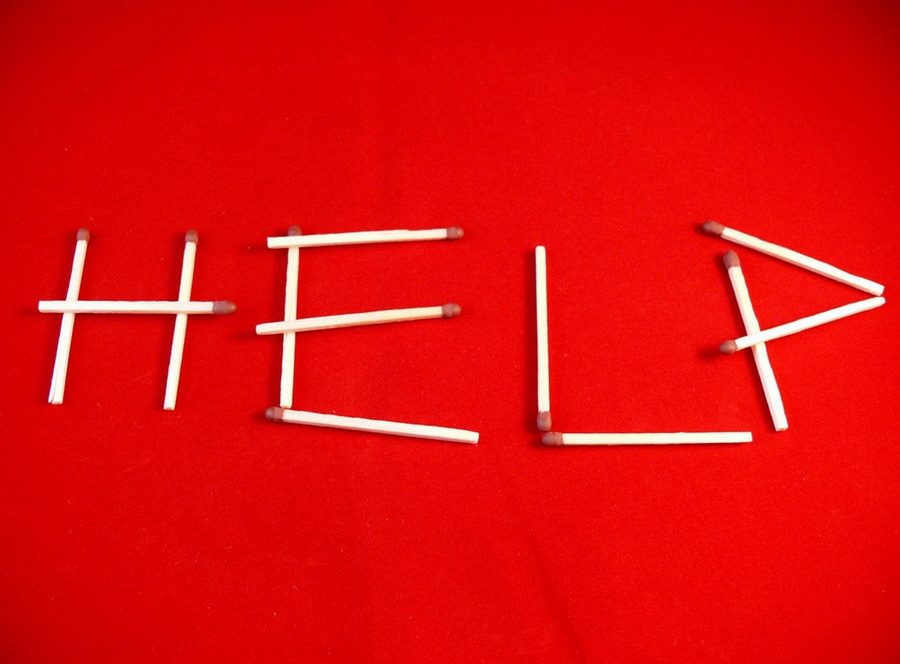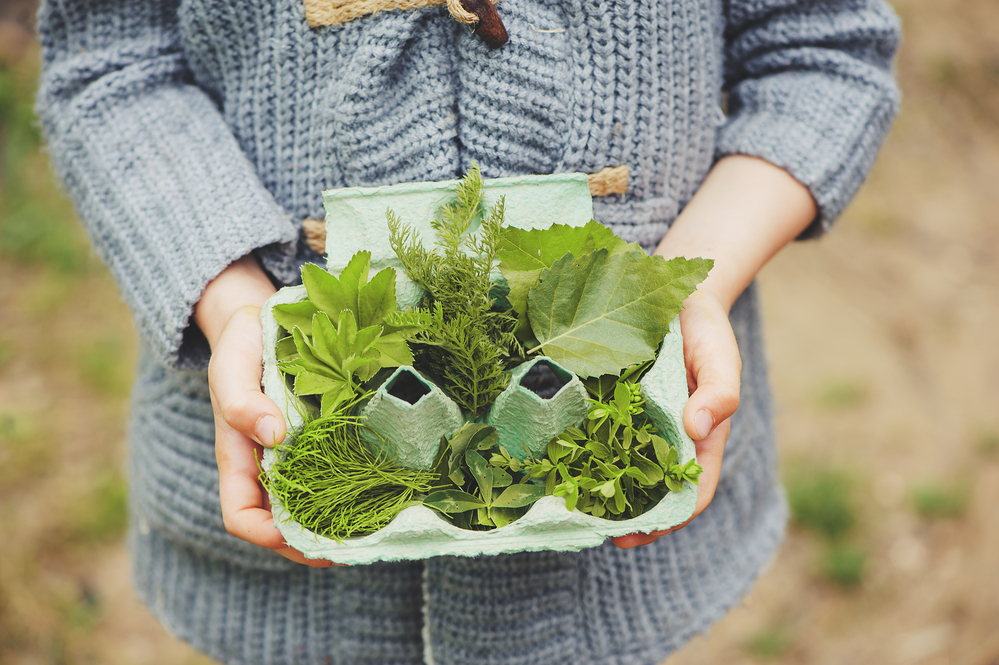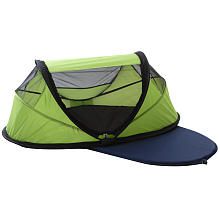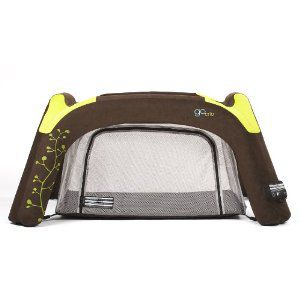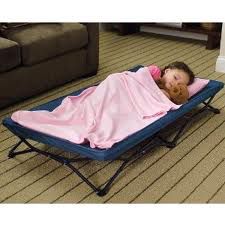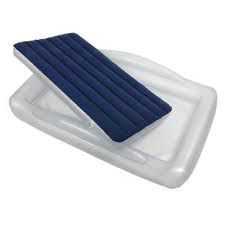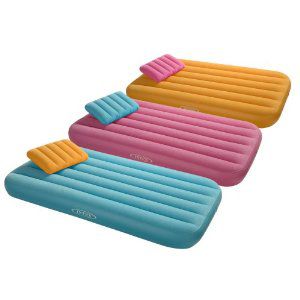 If you have one child or several, if doesn’t matter: they all love doing arts and crafts. The best way to be prepared for rainy days or sick days or just whenever the creative yen strikes is to have some basic art supplies for kids and toddlers on hand. Some you’ll have known already, but some might surprise you!
If you have one child or several, if doesn’t matter: they all love doing arts and crafts. The best way to be prepared for rainy days or sick days or just whenever the creative yen strikes is to have some basic art supplies for kids and toddlers on hand. Some you’ll have known already, but some might surprise you!
 We’ve all heard the old saying, “Music soothes the savage beast,” and know the benefits of music for unborn and newborn babies. But what about toddlers? If there ever was a savage beast to tame, it would be an unruly toddler. But beyond lullabies, what benefits does music for toddlers bring? Let’s examine some of the ways toddlers are influenced for the better by music, and how to utilize music for toddlers to the best effect.
We’ve all heard the old saying, “Music soothes the savage beast,” and know the benefits of music for unborn and newborn babies. But what about toddlers? If there ever was a savage beast to tame, it would be an unruly toddler. But beyond lullabies, what benefits does music for toddlers bring? Let’s examine some of the ways toddlers are influenced for the better by music, and how to utilize music for toddlers to the best effect.
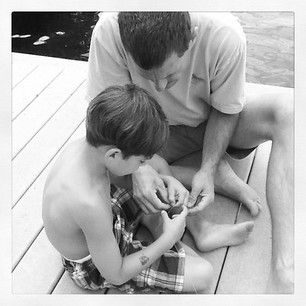 Have you ever thought about teaching your kids the art of fishing? Of course there’s the romance of little Huckleberry Finns sitting on a dock with a string and a stick. And then there’s the possibility of catching dinner. And teaching kids that all food doesn’t necessarily come from a supermarket. But the photos you’ll get? Priceless.
Have you ever thought about teaching your kids the art of fishing? Of course there’s the romance of little Huckleberry Finns sitting on a dock with a string and a stick. And then there’s the possibility of catching dinner. And teaching kids that all food doesn’t necessarily come from a supermarket. But the photos you’ll get? Priceless.
We spent a week this summer in the New York Finger Lakes swimming, casting and paddling. But the best memories were on the dock. When ‘Uncle Brad’ gave a fishing rod and tackle to my eldest son, the eyes lit up and hours were spent learning about sinkers, hooks and worms. Taking them all out and organizing. Sleeping with them. Uncle Brad is quite the accomplished fisherman, and I convinced him to share his tips for teaching kids the art of fishing.
1. Rule #1: Size does not matter. Any fish is a good fish. And catching one and handing them the rod can get them ‘hooked’ for life.
2. Start the teaching of casting using foam fish and a foam hook. When attached to a line, the foam hook can be used to retrieve the floating fish form in the water.
3. A kid’s rod is shorter with an internal reel and button. (Bait casting reel as opposed to a spinning reel). Shakespeare makes great ones for boys and girls and they are readily available at Target and Walmart. (You can even get Disney, Star Wars, Spiderman and princess themes).
4. A dock on a calm lake from 6-8am is usually the best time to nab the critters.
5. Use pliers to flatten the barbs on your hooks. It’s nicer for the fish.
6. Always remove hooks from the lines when you are done so as not to invite any injuries.
7. Make the kids look around prior to casting. My son caught a 5-foot-eleven man named ‘Uncle Brad’.
8. Encouraging the kids to drop the fish back into the water will excite them. (And then you don’t have to touch them).
9. Live worms are an easy and plentiful bait.
10. Try to teach about the species of fish as you catch.
11. Patience can be a challenge for kids. But having quiet conversations as you set your lines can form the best memories and bonds between parent and child.
12. Make sure at least one adult isn’t squeamish about baiting the hooks or taking fish off the line.
13. Rod and reel are not necessary. A string tied to a bamboo pole with a hook works just fine.
14. Fish under a certain number of pounds must be tossed back. Check in the jurisdiction you are in. And keeping anything as a pet is just a bad idea.
15. Hats, sunscreen, fishing license, water, band-aids and snacks should never be far away.
Next step? Tying their own flies and mastering the art of planking a salmon. Oh – and never make the mistake of asking first if they caught anything. As a good friend once said, “I’m going fishing. Not fish-catching.”
We’ve all been there. School is out and the days can get long! Children tend to need a little push in the right direction to stay occupied and continue their learning and play during the summer months. Here are a few ideas for activities that will make memories and keep them busy!
Now’s a great time to get organized, and one thing that should never be put off is the creation of your home emergency kit. You and your kids can use the opportunity to plan escape routes, compile vital information and pull out the globe to talk about parts of the world that are currently experiencing natural disasters such as earthquakes, floods, drought and fire. You could even use the opportunity to practice charitable giving by sorting out piggy bank funds and making a donation to a group who is currently in need. After your kit is assembled, make sure everyone in the family knows where it is located and every time you take something out, be sure to put it back.
1. Large waterproof box to store these supplies
2. First aid kit: at least two pairs of latex gloves, sterile gauze pads, scissors, tweezers, adhesive bandages, pain relievers, cold medications, antiseptic cream, alcohol wipes, cleansing agent, burn ointment, thermometer, eye wash, prescription medication (if anyone in the family uses one daily with dosage information), allergy medication, and a first aid manual.
3. Swiss army knife
4. Gas-powered camp stove
5. Sanitizing Hand wipes
6. Paper towels
7. Simple puzzles/card games
8. Non perishable food: granola bars, canned juices, soup, bottled water, peanut butter, crackers – most experts recommend enough for the whole family for 3 days but we upped it to a week to be on the safe side.
9. Plates, utensils, other feeding supplies (pots)
10. Heavy work gloves
11. Self-powered flashlights with extra batteries
12. Self-powered radio
13. Maps
14. Paper, pen, permanent marker
15. Emergency blanket or sleeping bag
16. Large heavy duty plastic bag
17. Personal hygiene items: toilet paper, feminine supplies, oral care
18. Extra keys to house and vehicle
19. Duct tape, plastic sheet, tools, bungee cords, rope
20. Old prescription glasses
21. Rain poncho
22. Copy of important documents and phone numbers
23. Whistle, dust mask
24. Emergency cash
25. Loveys or comfort objects for the kids
26. Mace
27. Candles and waterproof matches
28. Insect Repellant
29. Suntan Lotion
30. Wrench or pliers to turn off utilities
31. Solar cell phone charger
32. Manual can-opener
You are a great parent. Pail? Check. Lotion? Check. Designer tent/umbrella/cabana boy? Of, course. Oh. What are we supposed to do now? If you’re long on accessories but short on ideas, we have a few activities for you to try.
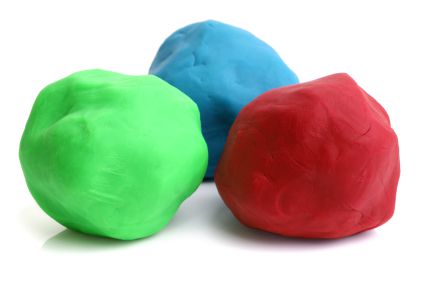 Start by putting down a garbage bag… You’ll need a box of cornstarch… but $3 is totally worth the hour of sanity you’ll get out of it. You mix the cornstarch with barely enough water and food colouring to get it runny: think slightly-too-soft cookie dough. (i.e., LOTS of cornstarch, and probably one cup to 1.5 cups of water.) It makes a non-Newtonian fluid (if you want to sound all sciency). Basically, if you punch it, hit it or grab it… it’ll go solid.
Start by putting down a garbage bag… You’ll need a box of cornstarch… but $3 is totally worth the hour of sanity you’ll get out of it. You mix the cornstarch with barely enough water and food colouring to get it runny: think slightly-too-soft cookie dough. (i.e., LOTS of cornstarch, and probably one cup to 1.5 cups of water.) It makes a non-Newtonian fluid (if you want to sound all sciency). Basically, if you punch it, hit it or grab it… it’ll go solid.
As soon as you relax your hold if it (or gently push your hand into it) it’ll turn to a thick pancake-batter like consistency. Makes cool “ooze” for little kids to play with… and cornstarch is a no-brainer for clean-up. Enjoy.
Urban Mommies always seem to be on the go, especially in the summer! When traveling with our little ones, finding a comfy place for them to sleep can be a source of concern. It’s easy to feel like Goldilocks in the house of the Three Bears: our children are too big for a pack-n-play or a crib but they are too small to be comfortable in a large adult bed. What’s a mom to
do? We need to find a bed that is just right, and these travel beds for small children do the trick.
The solution? A Travel bed specially designed and shaped to accommodate infant/toddler and young child age groups. There is an assortment from which to choose including: inflatable air mattresses, simple and light-weight cots, lightweight play yards many of which come with a bassinet for small babies. Some travel beds are also equipped with folding bed rails for children who have a tendency to roll out of bed in the middle of the night. Most importantly, because many of the travel beds are inflatable, they are also quite portable, light-weight and c
an easily be folded to fit into a car or a closet.
Several makers of child travel beds and different styles of travel beds are available.The Urbanmommies Editors found the following child and infant travel beds particularly pleasing:
Unlike the hardier and bulkier play yards of our youth, the PeaPod Plus Baby Travel Bed is more like a “travel cocoon.” The mattress is inflatable and, when baby is finished sleeping, can be folded into a compact tote for easy carrying; no more lugging around the heavy pack-n-play! This travel bed is also outdoor-friendly: the mesh bubble blocks bugs, wind, and half of the UV rays. The mattress inflates in less than 5 minutes using the a specific pump (sold separately by Leaps and Bounds).
The GoCrib is a standard size, ultra-portable travel crib that packs into a lightweight backpack for families that are on the go. Because it’s inflatable, it is pretty easy to assemble. But, once it is set up the rigid structure creates a strong and safe environment. The product features a 27″ x 39″ insulating mattress and a 25″ depth sleeping and play area (same as a standard play yard).
I wish that they had something like the My Cot Portable Travel Bed when I was a child. It would have made sleeping at my grandparents’ house a lot more comfortable. This portable cot can go to Grandma’s, day care as easily as it can be transported to sleepovers! The bed is slightly lifted off the ground leaving enough room underneath to ensure that the children sleeping on it stay comfy and dry whether the cot is indoors and out. It even comes with its own carry bag.
We love the Tuck-Me-In Travel Bed with Removable Mattress. It’s so easy to assemble my daughter and her cousins argue about how’s turn it is to inflate the mattress. The famous inflatable bed features a larger, fully-detached mattress, for snugglier sleepovers and easier linen changes. Soft and cushy, with a flocked surface that’s not sticky, it also built-in safety bumpers. The Tuck-Me-In is very light and folds compactly. The pump and tote included in the price of the bed. Further, if your little one is a sheet lover, like my daughter is, you can purchase the coordinating travel bed accessories from One Step Ahead too.
My 8 year-old daughter is begging me for a bed that can accommodate all her friends when they have a sleep over. Rather than pull out the old sleeper sofa’s mattress, we elected to go the less time consuming and affordable route and took a look at the Cozy Kidz Airbeds. The Intex Cozy Kid Air Bed Twin Size comes in three bright fun colors: pink, blue and orange . Both the pillow-top and mattress-top are lightly flocked which adds comfort while also preventing the sheets from sliding off of the mattress. This is the perfect air mattress to take on a sleepover or even family camping trips. The beds are 34.5″ Wide x 62″ Long x 7″ height (slightly shorter than the average twin bed) but the dimensions may vary up to two inches depending on firmness and come with built in pillows. Even better? The mattresses can withstand more than 200lbs which means more than one child can sit on it at a time before having to worry that they are going to cause the mattress to deflate. One note, the mattress does not come with a built in pump.
Traveling with small children doesn’t have to be painful. Most Urban Mommies know that the first step to having a happy child is ensuring that child has had a good night’s sleep. With so many great travel bed choices, we know that you & your family will find the right one (or two? or three?) that works for you.
Good luck! And safe travels!
Severe heat can inhibit the safety of babies and children. With global temperatures on a slow march upwards, heat waves such as this are unfortunately likely to become more frequent than their previous once-in-a-lifetime occurence. Some people adore the heat, but babies and children as well as pets and elderly relatives are vulnerable to heat strokes, dehydration and other serious heat-related ailments. Here are some tips on surviving the heat.




